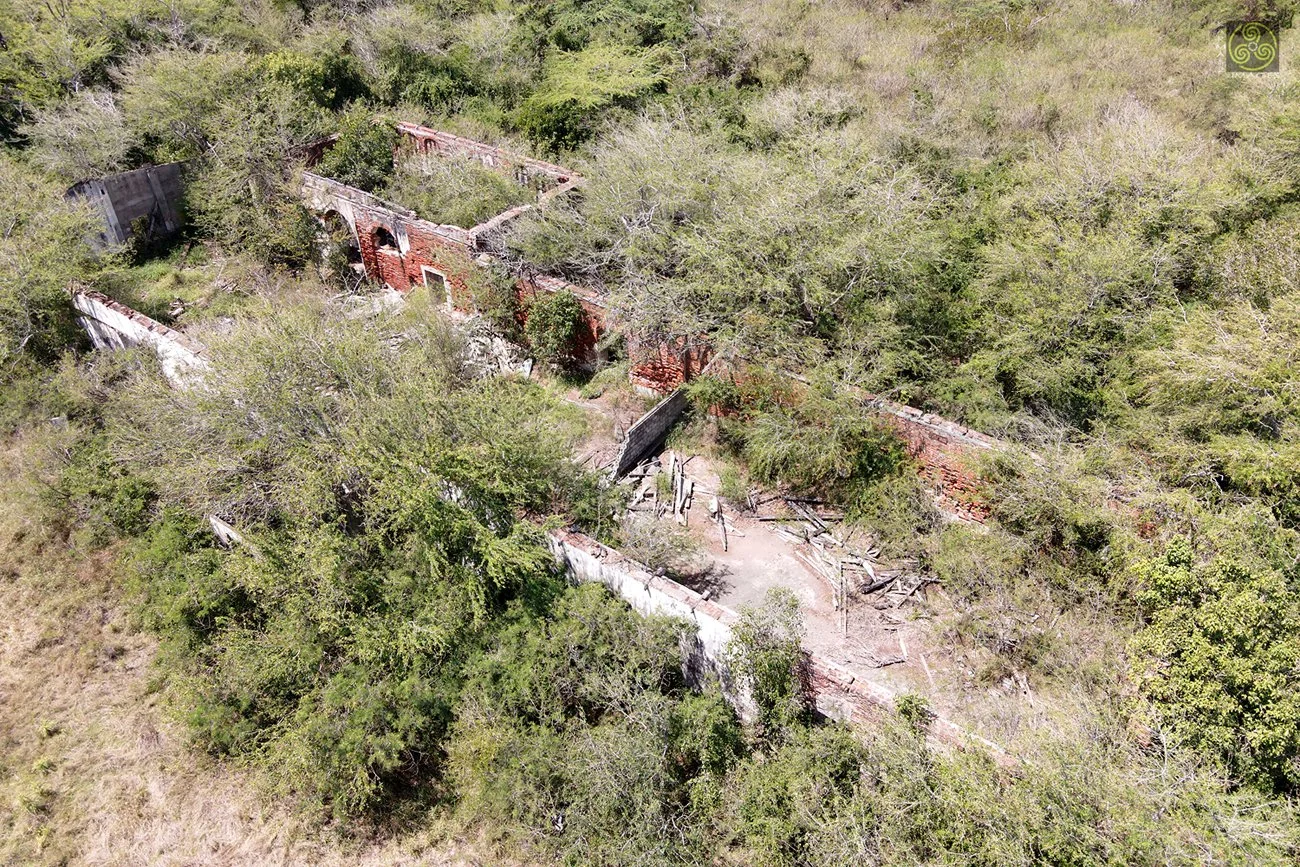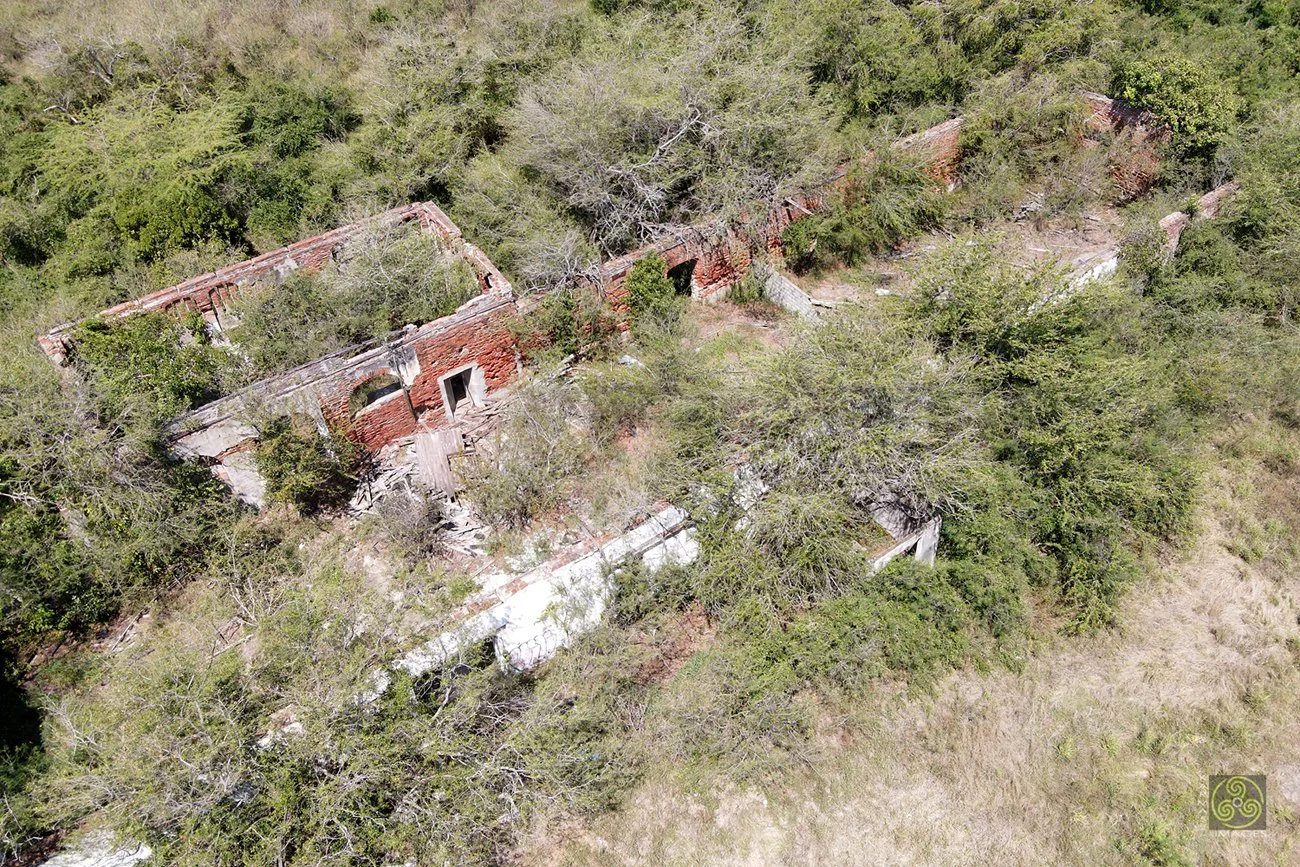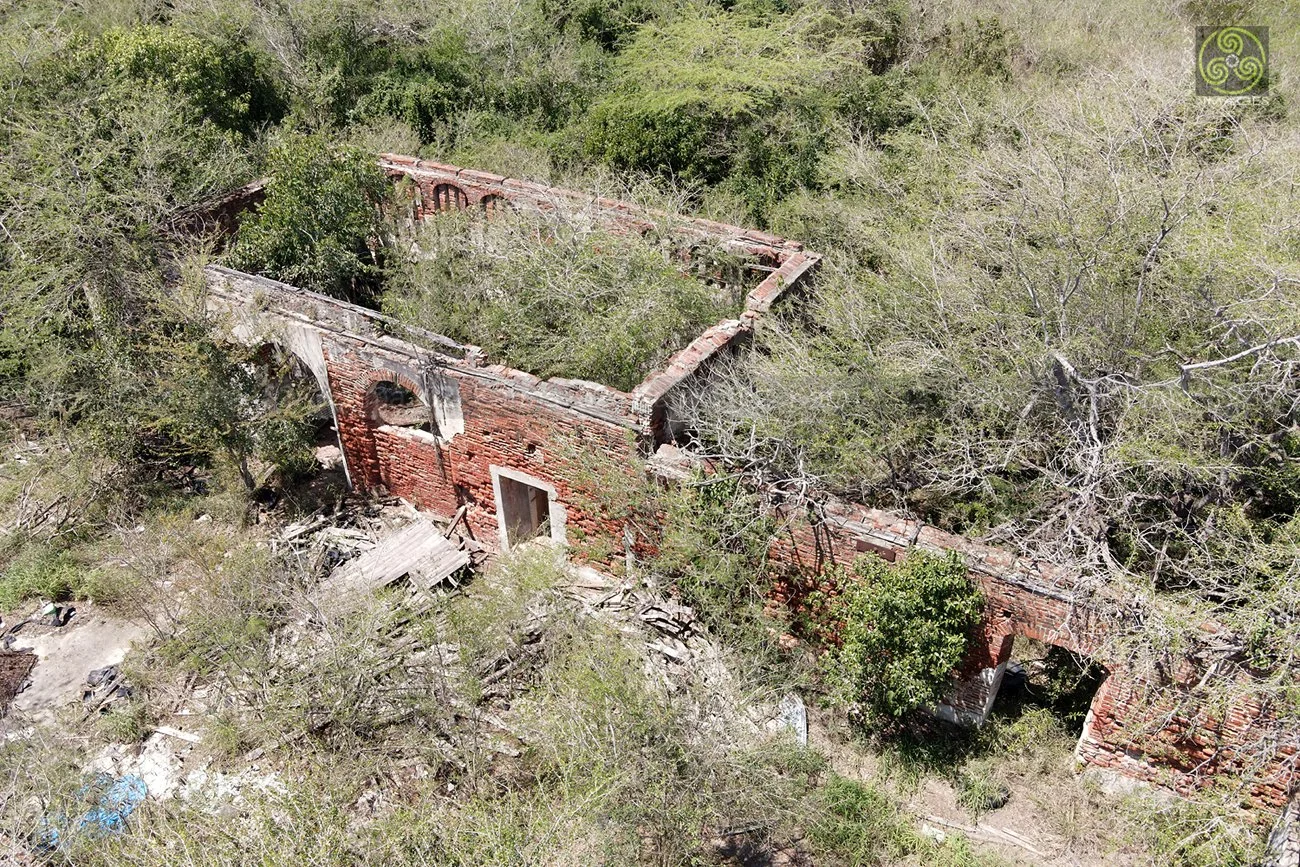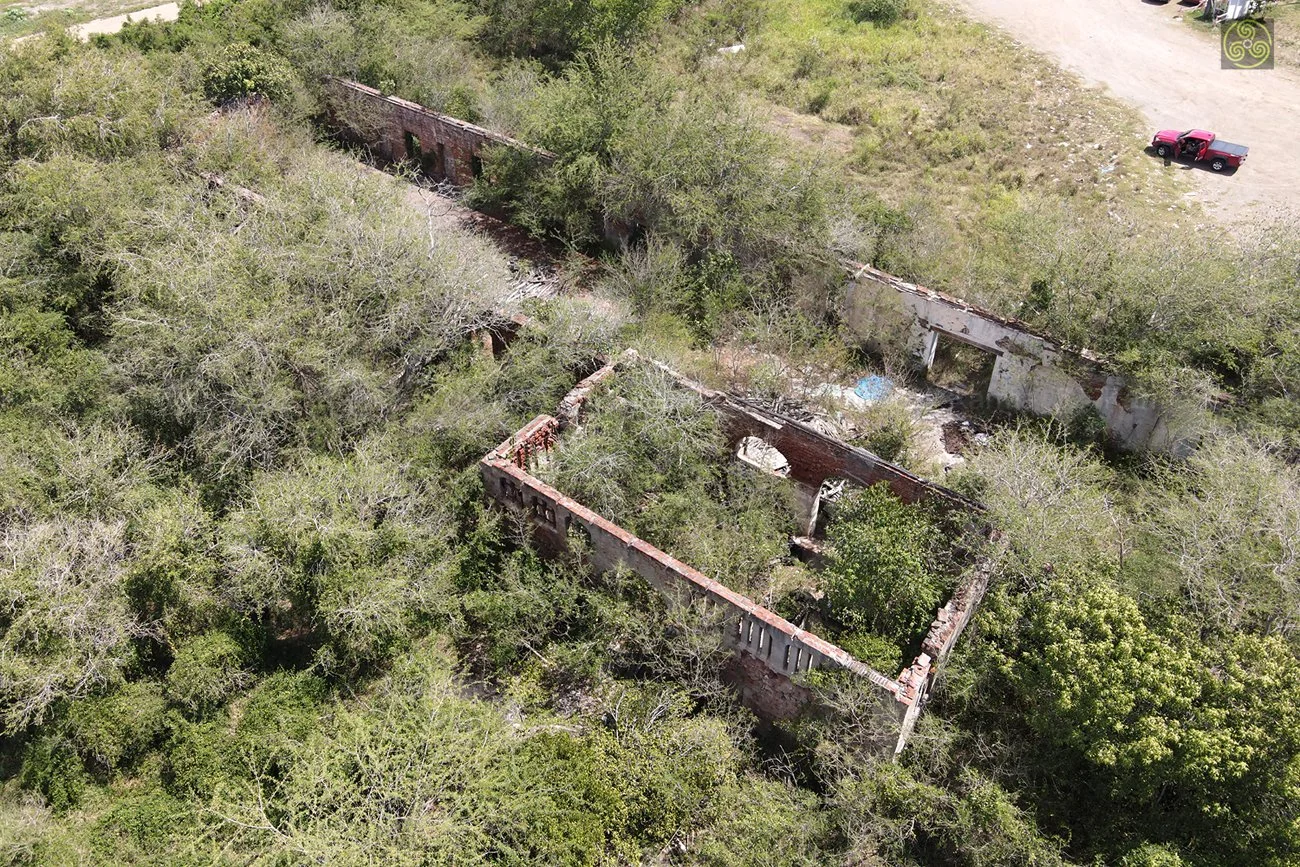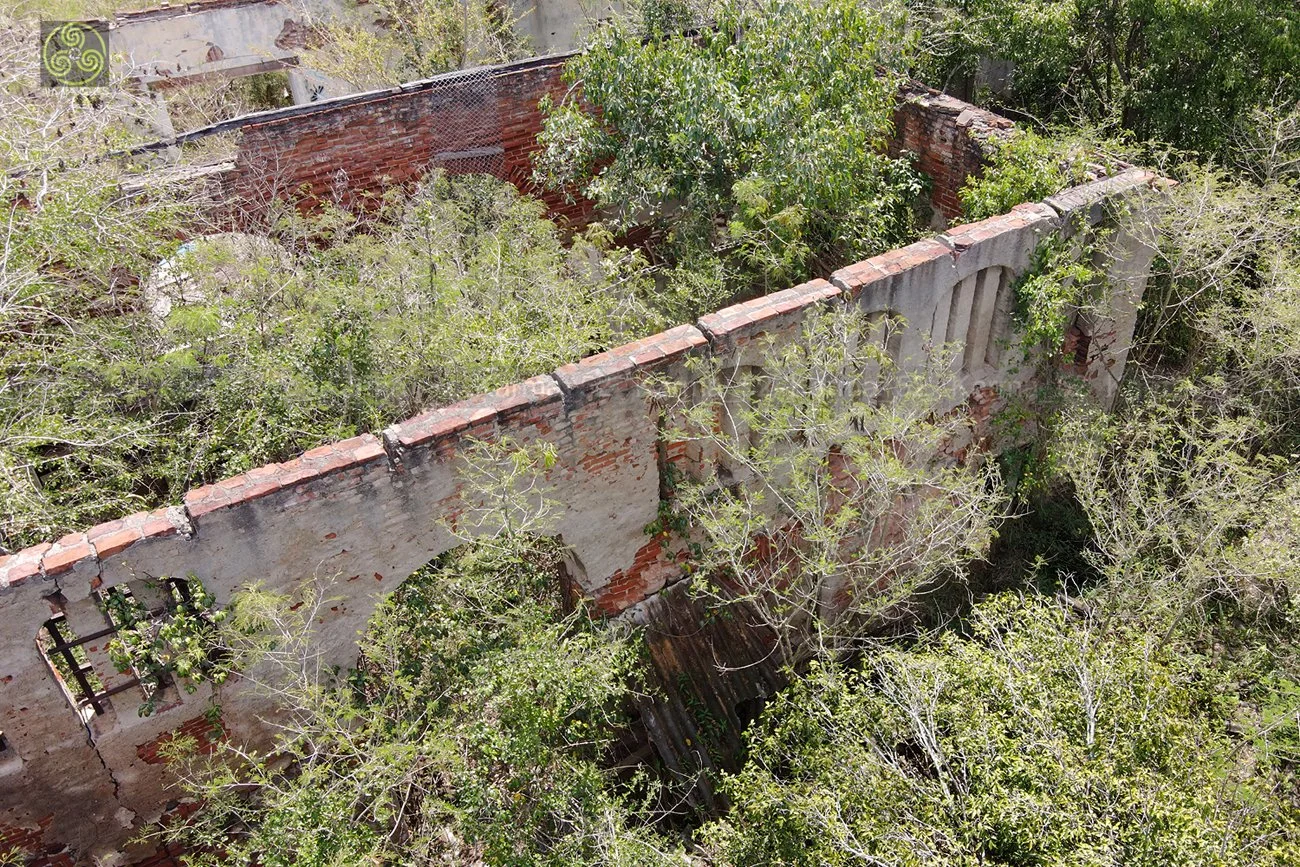
Central Aguirre
Location: Aguirre
Date Established: 1899
Date Ceased Operations: 1990
Annual Production Graph
Average Annual Production: 73,665 Tons
Best Production Year: 1964/134,281 Tons
Family Ownership: None
Corporate Ownership: De Ford & Co., Central Aguirre Sugar Companies-a Trust, Central Aguirre Sugar Company
Central Aguirre and Central San Cristobal started to get organized before the Foraker Act of 1900 and the free entry of Puerto Rican products into the US market. Because Central San Cristobal took a few more years to be built, Central Aguirre was the first US owned sugar mill established Puerto Rico after the US occupation in 1898. Central San Cristobal was eventually established but was the only US owned sugar mill on the island that was not successful going into receivership in mid 1913 and operating the 1913-1914 season under a lease by the receiver on a percentage basis.
Hacienda Aguirre was established in the mid 1850s by Antonio José Vázquez and his wife Enriqueta Aguilar on land granted him by the Spanish Crown. By 1850 Hacienda Aguirre had a sugar mill and consisted of approximately one hundred ninety three acres but by 1880 it had grown to some one thousand five hundred acres with a steam driven mill. By 1899 Hacienda Aguirre consisted of some two thousand two hundred fifty acres making the Vázquez Aguilar family the largest landowners in the area. Upon the death of Antonio José Vázquez in the 1880s, Hacienda Aguirre was inherited by his daughter Antonia Vázquez Aguilar (1854-1894) and her husband, Spanish immigrant from Valladolid, attorney Ignacio Rodriguez Lafuente.
DeFord & Co. bought Hacienda Aguirre in January 1899 for $100,000 with plans to build a modern central sugar mill about 1.3 km south of where the Hacienda Aguirre sugar factory was located. Ruins of the old Hacienda Aguirre still exist and are photographed in the gallery below. DeFord & Co. also leased with option to buy other haciendas adjacent to Hacienda Aguirre. These included the nine hundred thirty seven acre Hacienda Carmen, the one thousand three hundred acre Hacienda Josefa and the two hundred thirty one acre Hacienda Amadeo. In addition, DeFord & Co. signed contracts with other land owners or colonos to process the sugarcane grown in their lands.
DeFord & Co., was a Boston corporation founded in 1898 by a group of bankers and capitalists wanting to take advantage of the opportunities available in the new US territory. DeFord & Co. members were William Sturgis Hooper Lothrop (1870-1905), John Dandridge Henley Luce (1855-1921), Henry DeFord and Francis Dumaresque (1854-1902). DeFord and Dumaresque had been sugar brokers in Boston since 1886, Luce and Lothrop had worked in the foreign banking department of Kidder, Peabody & Co. As the brother-in-law of US Senator from Massachusetts Henry Cabot Lodge and the latter’s intervention with President William McKinley, Luce was instrumental in the establishment of DeFord & Co. as the first fiscal agent of the US military government in Puerto Rico. thereby making DeFord & Co. a formal banking entity, the first one to establish on the island after the US occupation.
The enterprise DeFord & Co. had envision and was in the process of building had become too large in terms of its managerial and financial requirements. Therfore, in July 1899 a partnership known as the Central Aguirre Syndicate was established. Its initial capital was $525,000, sum that by 1903 had increased to $2,000,000 due to the capital needed to invest in manufacturing machinery and equipment and additional lands. The additional lands acquired and leased and under contract, required the expansion of the 12 miles of light, narrow gauge railroad originally installed by DeFord & Co. to bring sugarcane from the fields to the mill. So in 1903 the Syndicate acquired 100% of the Ponce & Guayama Railroad Co. for which they paid $150,000 to the French railroad company Cía. Ferrocarrilera de Puerto Rico, its previous franchise holder.
On August 14, 1905, Central Aguirre Syndicate was reorganized as Central Aguirre Sugar Companies, a voluntary trust organized under the laws of Massachusetts of which John Dandrige Henley Luce was president. By then, Dumaresque had returned to Boston where he died in 1902, Lothrop had died in Ponce earlier in 1905 during an apendectomy and DeFord had retired. The reorganization gave sugar refiners majority ownership interest in Central Aguirre and brought to the Board of Directors James Howell Post, a senior partner in B. H. Howell, Son & Co. and president of the National Sugar Refining Co. and Frederick D. Mollenhauer, Vicepresident of the National Sugar Refining Corp. Another reorganization happened in March 1918 when Central Aguirre Sugar Companies was reorganized and succeeded by Central Aguirre Sugar Co., a corporation organized under the laws of Puerto Rico.
B. H. Howell, Son & Co. was a firm of commission merchants that handled the purchase of raw sugar and the sale of refined sugar for Mollenhauer Sugar Refining Co. in Brooklyn, NY and for the National Sugar Refining Co. in Yonkers, NY. Mollenhauer Sugar Co. and National Sugar Refining Co. were inter-related. Both were directly or indirectly controlled by Henry O. Havemeyer and the American Sugar Refining Co. also known as the Sugar Trust. Frederick D. Mollenhauer's sister Julia was married to J. Henry Dick, son of William Dick a Director of the American Sugar Refining Co. Charles Sneff, a cousing of Henry O. Havemeyer owned stock in Mollenhauer Sugar Refining Co. which stock was subsequently exchanged for shares of the American Sugar Refining Co. making American 30% owner of the Mollenhauer Sugar Refining Co.
As part of its expansion, in 1909 Central Aguirre Sugar Co. acquired Central Cortada for $1.2 million. In January 1920 Luce & Co. S en C, a related limited partnership established in 1919, acquired a 72.5% interest in the outstanding stock of Central Machete. Central Aguirre Sugar Co. analysis of in the 1921 Moody's Manual of Investments states that one of the Board members was James Howell Post. At the time, Post was also president of the National Sugar Regining Co. and a member of the Board of Directors of The First National City Bank of NY, today Citibank. The report includes Central Machete Co. and Luce & Co. S en C as subsidiaries whose members were all Directors of Central Aguirre Sugar Co.
Per the Moody'd report, Central Aguirre Sugar Co. return on investment (ROI) for the years 1916-1921 was 58%, 68%, 44%, 24%, 30% and 50%. Total sales for the period ranged from $4.5 million to $6.2 million except for 1920 when sales were an astonishing $17.5 million. That period known as "the dance of the millions", was a period of high demand for sugar due to the devastation of the European beet fields during WWI which eliminated competition of beet sugar. The extremely high annual sales in 1920 could very well have been the result of the unprecedented high price of sugar that year reaching in excess of 21¢ per pound.
The Central Aguirre Associates Annual Report to Stockholders for the year ended July 31, 1947 states; "During the year we have purchased, dismantled and sold the Central Caribe, a factory owned by Godreau, Godreau & Co. built in 1930 to grind their own and nearby cane, all of which had previously come to us. With the closing of this factory, our cane supply is increased by some 75,000 tons." Based on this statement, it appears that land was not part of the acquisition of Central Caribe and was retained by the Godreau family and other growers who then became colonos of Central Aguirre. Central Caribe machinery was sold to a new sugar mill being established in Haltunchen, Campeche, Mexico, called La Joya.
In 1941, the Government of Puerto Rico decided to enforce the 500 acre limitation provision contained in the Foraker Act. A lawsuit was filed against Luce & Co. and Central Aguirre Sugar Co., case which by 1969 had not been decided. In 1969 a Cuban conglomerate acquired Central Aguirre and its subsidiaries and began selling its lands, in 1970 the Government of Puerto acquired all the assets from the Cuban company and continued to operate Central Aguirre until 1990 when it ceased to operate for good.
The sugar mill's location on the southern coast of the island with its own deep water dock on Jobos Bay, allowed for easy loading of the ships that transported sugar and molasses from Aguirre to the mainland USA, its main market. The sugar mill gallery below includes photos taken in 2014 and the last ten taken in 2024. In it you can see the deteriorating effect caused by time and Hurricane Maria. Aerial photos were taken by my son Jaime Luis Montilla of prphotoadventures.com.
The community town which still exists today, is photographed in the second gallery below. It was created around the sugar mill during the first half of the 20th Century. It includes housing, a theater, schools, churches, a general store and other facilities for administration and factory employees. The hotel building is very similar to the one at Guanica Centrale which, as can be seen from the pictures on that page has been well kept and is currently in use.
The Central Aguirre Historic District was added to the National Register of Historic Places in 2002. The submitting document is lengthy but very interesting with substantial information regarding the begining and development of Central Aguirre and the Puerto Rico sugar industry as well.

